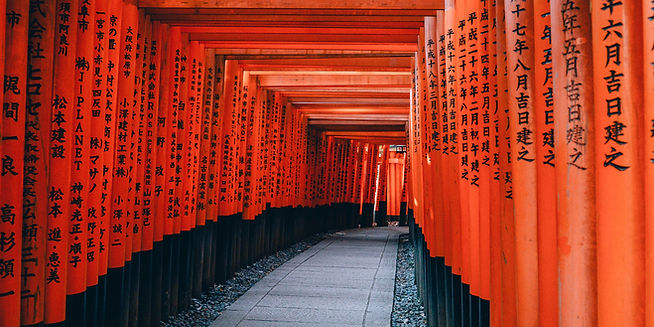Do U.S. Citizens Need a Visa for Japan in 2026? Complete Entry Guide
November 2, 2025 at 7:42:32 AM

As of 2026, U.S. citizens do not need a visa for short-term travel to Japan. Americans can enter visa-free for up to 90 days for purposes such as tourism, visiting friends and family, or short business trips. This policy is part of Japan’s long-standing visa waiver agreement with the United States.
Travelers must, however, have:
A valid U.S. passport (must be valid for the entire stay in Japan)
Proof of return or onward travel
No history of overstaying or legal violations in Japan
This means that if you’re planning a vacation, business visit, or short cultural trip to Japan, you can freely enter without applying for a visa beforehand — as long as your stay is under 90 days.
How Long Can U.S. Citizens Stay in Japan Without a Visa?
U.S. citizens may remain in Japan for up to 90 consecutive days per visit.
If you need to stay longer — for example, for work, study, or extended stays — you’ll need to apply for the appropriate visa before arrival. Common long-stay visa types include:
Work Visa: For employment or business activities
Student Visa: For university or language school enrollment
Spouse/Dependent Visa: For family members of Japanese citizens or residents
Cultural Activities Visa: For unpaid internships or cultural learning programs
If you’re already in Japan and wish to extend your stay, you must apply for an extension of stay through Japan’s Immigration Services Agency before your 90 days expire.
Japan’s eVisa System and What It Means for Americans
Japan has gradually introduced an eVisa (electronic visa) system, but as of 2026, it’s not required for U.S. citizens entering for tourism. The eVisa applies mainly to travelers from certain Asian countries.
However, this digital infrastructure might expand, so travelers should always check Japan’s Ministry of Foreign Affairs (MOFA) website or the Japanese Embassy in Washington D.C. before traveling. If eVisas become mandatory, the application process will be simple:
Apply online through MOFA’s portal.
Upload a passport copy and travel details.
Receive the electronic visa via email (if applicable).
What You Need to Enter Japan Visa-Free
While a visa isn’t necessary, Japan’s border officials are known for strict documentation checks. Make sure to bring:
A return or onward ticket (to prove you’ll leave Japan)
Proof of sufficient funds for your stay
Address of accommodation (hotel, Airbnb, or host)
Travel insurance (recommended but not mandatory)
If you can provide this information upon request, immigration officers typically grant you the 90-day entry stamp with no issues.
Visa-Free Travel Tips for Japan in 2026
Keep your landing card handy.
You’ll complete a “Disembarkation Card for Foreign Nationals” during your flight.
Fingerprinting and facial recognition.
Upon arrival, Japan requires biometrics from all foreign visitors for security.
Don’t overstay.
Even one day over 90 can result in fines or deportation, which may affect future travel.
No working on a tourist stay.
Paid activities or freelance work while on visa-free entry are prohibited.
Stay connected.
Consider a travel SIM or eSIM to navigate transport systems, trains, and translation apps easily.
How to Apply for a Visa (If You Need One)
If your stay exceeds 90 days or includes activities not covered by visa-free entry, apply for a visa before traveling.
Steps to Apply:
Visit the nearest Japanese embassy or consulate (for example, in Los Angeles, New York, or Washington D.C.).
Prepare the following:
Valid passport
Completed visa application form
Passport-sized photo
Proof of financial stability (bank statement, pay stub)
Invitation letter or travel itinerary (if required)
Submit your documents and wait for processing (typically 5–10 business days).
Special Entry Notes for 2026
COVID-19 Restrictions: As of 2026, Japan has lifted all pandemic-related entry requirements. No vaccination proof or testing is needed for U.S. tourists.
Customs: Strict on items like prescription medication, food, and electronics — always check Japan Customs’ list before traveling.
Travel Insurance: While not mandatory, it’s strongly advised to have coverage for medical care, as Japan’s healthcare can be costly for visitors.
Digital Immigration Gates: Japan’s airports now use automated e-Gates to speed up entry and exit for foreign travelers.
Frequently Asked Questions (FAQ)
Can I work remotely while visiting Japan visa-free?
No. Japan’s visa-free entry is strictly for tourism and short-term business (like meetings or conferences). Remote work for a U.S. company technically falls into a gray area but isn’t officially permitted.
Can I leave Japan and re-enter to extend my stay?
In theory, yes — you can leave and re-enter, but immigration may deny entry if it looks like you’re using back-to-back visits to live in Japan long-term. Always follow the 90-day rule.
Do children need a visa?
U.S. minors traveling with valid passports enjoy the same visa-free access as adults.
Conclusion
As of 2026, U.S. citizens can still travel to Japan visa-free for up to 90 days, making it one of the most accessible destinations in Asia for American tourists. With straightforward entry, excellent infrastructure, and unmatched cultural attractions, Japan remains a top choice for travelers seeking both tradition and modernity — no visa application required.
Before traveling, always verify the most recent guidelines on the Japanese Ministry of Foreign Affairs website, especially if your trip involves work, study, or long-term stays.

